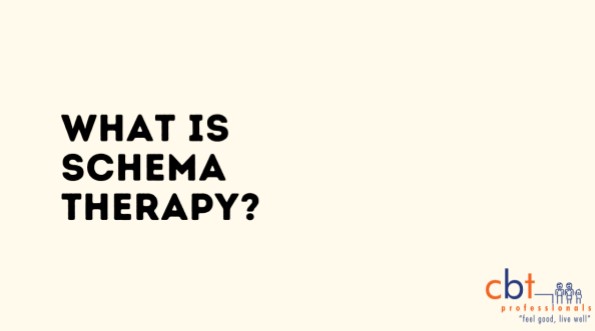Schema Therapy Brisbane
Schema Therapy is a newer therapy, combing elements of cognitive behavioural therapy (CBT), emotion-focused therapy, attachment therapy and others. It is an integrative approach to treat mental health concerns and personality disorders that don’t always respond to other treatment options. Most commonly, it is used for borderline personality disorder (BPD). Schemas are patterns, that people develop if their childhood emotional needs are not met. These can affect you throughout your life, contributing to problematic coping methods and behaviours. Schema therapy aims to teach you to meet your emotional needs, in the healthiest way possible! This type of therapy can support long-lasting changes, to improve your everyday life.
How do Schemas Develop?
The most common, contributing factor for schema development, is not having core emotional needs met in childhood. As these children enter adulthood, they can have deficits in their ability to find ways to meet these needs. Schema Therapy is based on the belief that early schemas form, from adverse experiences as a child. These core needs include:
- Freedom to express how you feel, and ask what you need
- Self-identity and autonomy
- Safety and being securely attached to others
- Ability to play and be spontaneous
- Limits and Boundaries
In addition, there are 4 types of negative experiences that contribute to schema development. These include:
- Lack of limits or Overindulgence – If your parents are overinvolved or overprotective, they may have not set boundaries for you.
- Unfilled Needs – If your parents did not give you affection or failed to meet other core emotional needs.
- Victimization or Traumatization – A situation where you experiences distress, abuse, trauma by a parent or caregiver.
- Internalization or Identification – You could have absorbed your parents attitudes. You identify with some, and internalize others.
The effect of these cause children, as they enter into adulthood, to make unhealthy choices, form toxic relationships and engage in destructive behaviour. Further, these adults can have poor sense of judgement, experience feelings of worthlessness or self-doubt.
What kind of coping styles do Schemas Create?
In Schema Therapy, reactions are also know as coping styles. These can involve behaviours, feelings or thoughts. These develop as a response to avoiding overwhelming and hurtful emotions from your developed schema.
These coping styles vary person to person, making it crucial to seek treatment. Though they can be helpful for childhood, in adulthood they can reinforce your schema. The three main coping styles are similar to the fight, flight or freeze responses. They include:
- SURRENDER
This consists of accepting your schema, and giving into it. This reinforces your patterns and strengthens your schema. For example, if you surrender to a schema that formed as a result of abuse as a child, you can find yourself in an abusive relationship.
- AVOIDANCE
This consists of living with your schema, and attempting to not trigger it. You can avoid situations that could trigger your schema, or make you feel vulnerable. Avoiding can lead to risky, compulsive behaviour and/or substance use.
- OVERCOMPENSATION
This consists of your best efforts to fight a schema, but acting in opposition to it. This is not a healthy way to cope with your schema, as it goes too far. This results in you possibly being excessive, demanding and insensitive.
What are the goals of Schema Therapy?
Identifying and modifying schemas is central to schema therapy. You and your psychologist will discover the origins of your unmet emotional needs. Through schema therapy, you will learn to construct nurturing relationships and begin to feel self-worth. Your psychologist could use a range of techniques in the process:
- Imagery
- Flash Cards
- Diaries
These techniques, and your therapy with your psychologist will aim to:
- identify and address coping styles that get in the way of emotional needs
- change patterns of feelings and behaviours that result from schemas
- learn how to get your core emotional needs met in healthy, adaptive ways
- learn how to cope with frustration and distress when needs can’t be met
- identify and begin healing schemas
Where do I seek Schema Therapy?
Looking for Schema Therapy? CBT Professionals offers Schema Therapy with a multitude of our highly experienced, educated psychologists, at our Coomera, Nerang, and Mount Gravatt locations. All our psychologists were chosen on a uniting set of values that define us. We understand that every schema is unique and requires our best care and attention to craft a treatment approach. We can provide care every step of the way, to help work through your schemas and allow you to live a better and more fulfilling life!
Contact us now via telephone (07) 5551 0251 or (07) 3102 1366. Or, online enquiry to book an appointment. Take that first step to a greater and more fulfilled life!
If you require urgent help, please reach out to organisations like Beyond Blue. Or call the mental health helpline on 1300 22 4636.
Disclaimer: Firstly, content on this website is provided for education and information purposes only and is not intended to replace advise from your doctor or registered health professional. Secondly, readers are urged to consult their registered practitioner for diagnosis and treatment for their medical concerns. Lastly, CBT are not an emergency service, please call 000 in an emergency.
REFERENCES:
Good Therapy. (2022). Schema Therapy. Good Therapy.
Raypole, C. (2019). How Schema Therapy Can Help You. Help Line.
THREE CONVENIENT LOCATIONS
MOUNT GRAVATT
Mt Gravatt Medical PrecinctSE 105, 1808 Logan Rd
Upper Mount Gravatt QLD 4122


